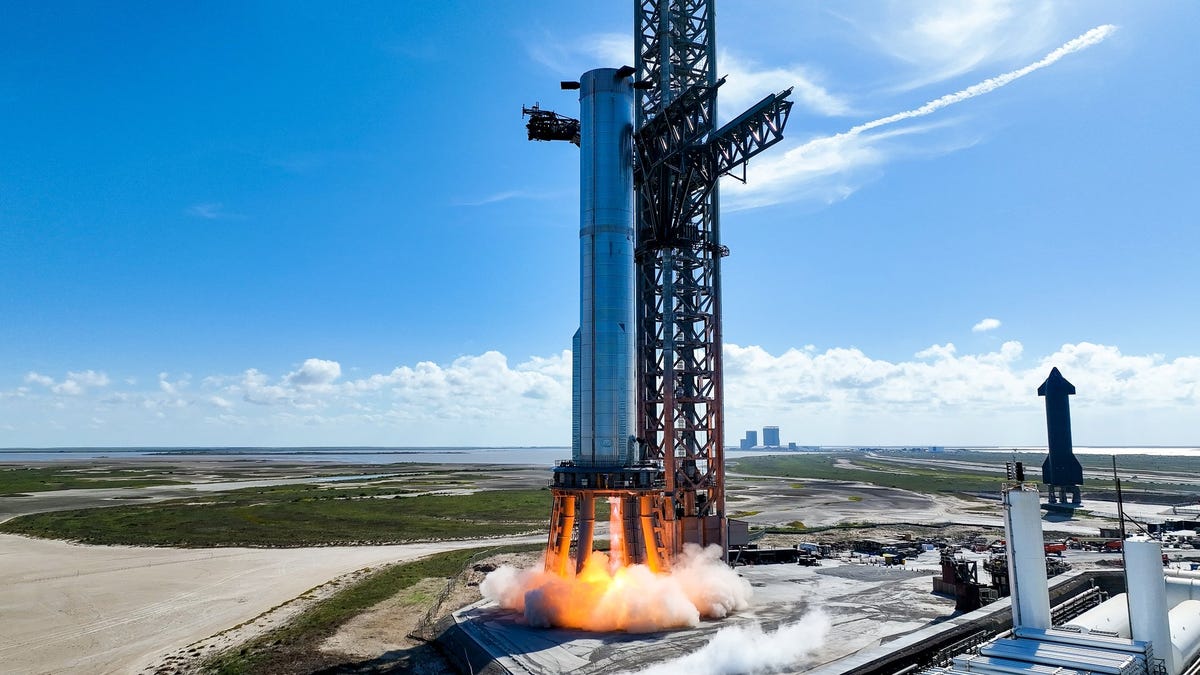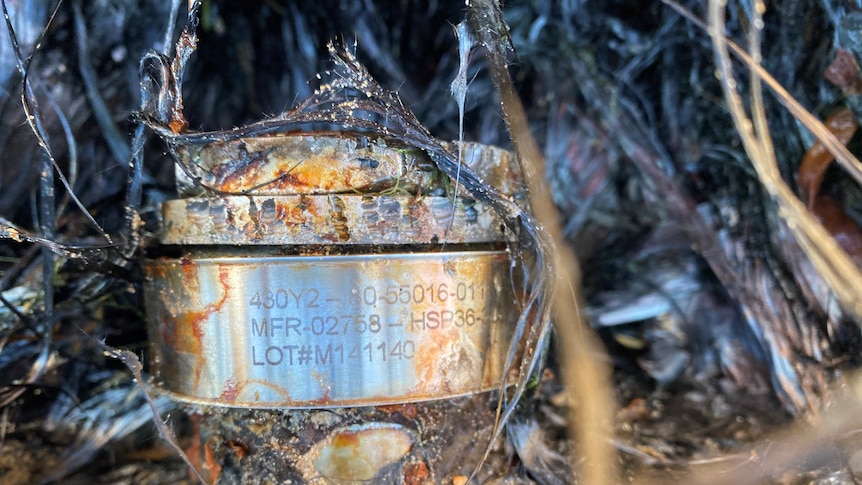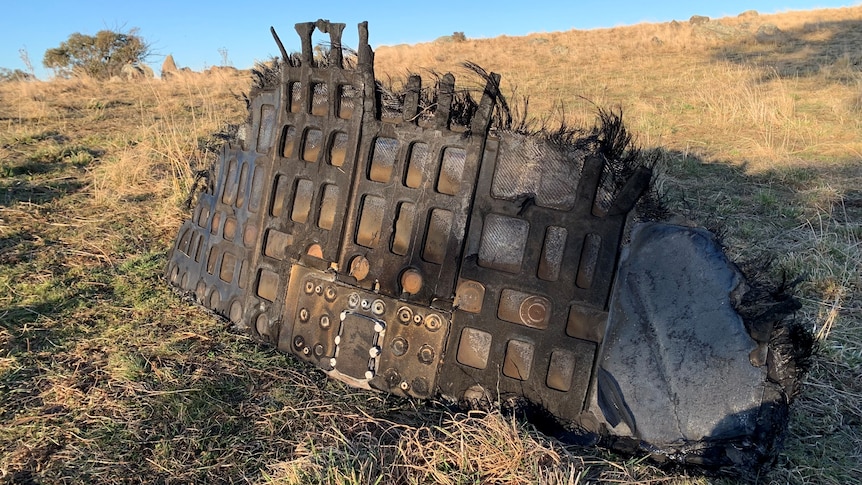
Engineers at SpaceX have performed the first static fire test of Booster 7, a prototype of the Super Heavy first stage. The test, in which just one of the booster’s 33 Raptor engines was ignited, moves the company closer to its first orbital test of the revolutionary Starship system.
The test happened on August 8 at SpaceX’s Starbase facility in Boca Chica, Texas, according to a company tweet. Ground teams completed a single Raptor engine static fire test as the 227-foot-tall (69 meters) booster stood vertically at the “Mechazilla” launch tower. Booster 7 is equipped with 33 Raptor engines, but SpaceX, in a rare moment of caution, chose to ignite just one.
Encouragingly, a pair of spin-prime tests conducted earlier in the day did not result in an burst. SpaceX avoided a repeat of the July 11 incident in which a gaseous mixture of methane and oxygen was accidentally ignited, causing a significant explosion directly beneath the booster.
Spin-prime tests, in which propellants are pumped through the engines without igniting them, are typically done in preparation of static fire tests (static fire tests involve engine burns without an actual launch of the rocket). They’re done to test the plumbing, but the gasses produced during the July 11 spin-prime test got ignited by an unknown source. The resulting explosion damaged the prototype booster, sending it back to the Starbase factory for repairs.
Booster 7 returned to the launch pad on August 6 following the re-installation of 20 of the rocket’s 33 Raptor engines, accordingly to Teslarati. On August 8, “clearly indicative of a much more cautious second attempt at engine testing, SpaceX ‘primed’ just one of those 20 Raptors by flowing high-pressure gas through the engine to spin up its turbopumps without igniting its preburners (used to generate the gas that powers the turbopumps) or main combustion chamber,” as Teslarati reports.
Later that day, SpaceX ignited the lone Raptor engine. The company have you performed a static fire test of a Starship booster prototype before, but this marks the first static fire test of Booster 7, even if limited in scale. The test appeared to go smoothly, with the engine firing and shutting down following a four-second burn. Not content to stop there, SpaceX also performed static fire tests of two Raptors on an upper stage, namely the prototype Starship 24.
It’s a small step for Starship, but a potentially big leap for SpaceX, as it works to develop its revolutionary heavy launch system. The booster is the first stage of the fully reusable two-stage rocket, with the Starship spacecraft serving as the upper stage. SpaceX envisions Starship as a platform for delivering passengers and cargo to deep space, including future missions to Mars. It’s also NASA’s current first choice to serve as the human landing system for Artemis 3, scheduled for no earlier than 2025.
Both Starship stages are powered by Raptor engines, which are more powerful than the Merlin engines used on the company’s Falcon 9 rockets. The Starship upper stage has already completed a series of suborbital tests, including a successful vertical landing on May 5, 2021. A launch of the fully stacked system has yet to take place, but SpaceX expects to perform an orbital test at some point this year. CEO Elon Musk expects this test will fail, saying a successful orbital test could happen at some point within the next 12 months.
The sight of a single Raptor engine burn is impressive, making it hard to imagine what it’ll look like when all 33 Raptor engines are set to go-mode. The successful test on August 8 suggests a full-fledged static fire test of Booster 7 is closely approaching.
More: Gigantic Crowds Expected for Inaugural Launch of NASA’s Mega Rocket.
.


